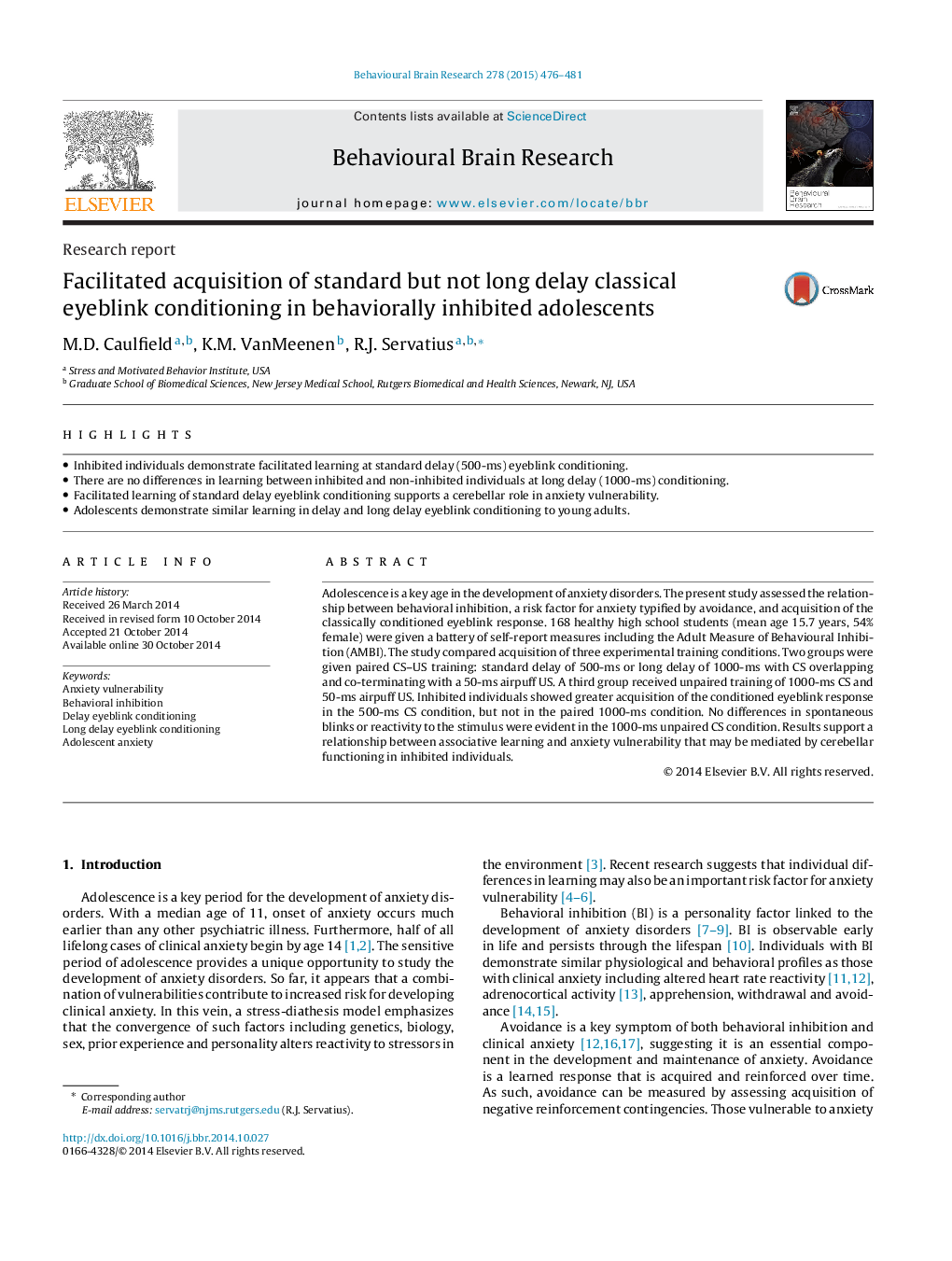| Article ID | Journal | Published Year | Pages | File Type |
|---|---|---|---|---|
| 6257649 | Behavioural Brain Research | 2015 | 6 Pages |
â¢Inhibited individuals demonstrate facilitated learning at standard delay (500-ms) eyeblink conditioning.â¢There are no differences in learning between inhibited and non-inhibited individuals at long delay (1000-ms) conditioning.â¢Facilitated learning of standard delay eyeblink conditioning supports a cerebellar role in anxiety vulnerability.â¢Adolescents demonstrate similar learning in delay and long delay eyeblink conditioning to young adults.
Adolescence is a key age in the development of anxiety disorders. The present study assessed the relationship between behavioral inhibition, a risk factor for anxiety typified by avoidance, and acquisition of the classically conditioned eyeblink response. 168 healthy high school students (mean age 15.7 years, 54% female) were given a battery of self-report measures including the Adult Measure of Behavioural Inhibition (AMBI). The study compared acquisition of three experimental training conditions. Two groups were given paired CS-US training: standard delay of 500-ms or long delay of 1000-ms with CS overlapping and co-terminating with a 50-ms airpuff US. A third group received unpaired training of 1000-ms CS and 50-ms airpuff US. Inhibited individuals showed greater acquisition of the conditioned eyeblink response in the 500-ms CS condition, but not in the paired 1000-ms condition. No differences in spontaneous blinks or reactivity to the stimulus were evident in the 1000-ms unpaired CS condition. Results support a relationship between associative learning and anxiety vulnerability that may be mediated by cerebellar functioning in inhibited individuals.
